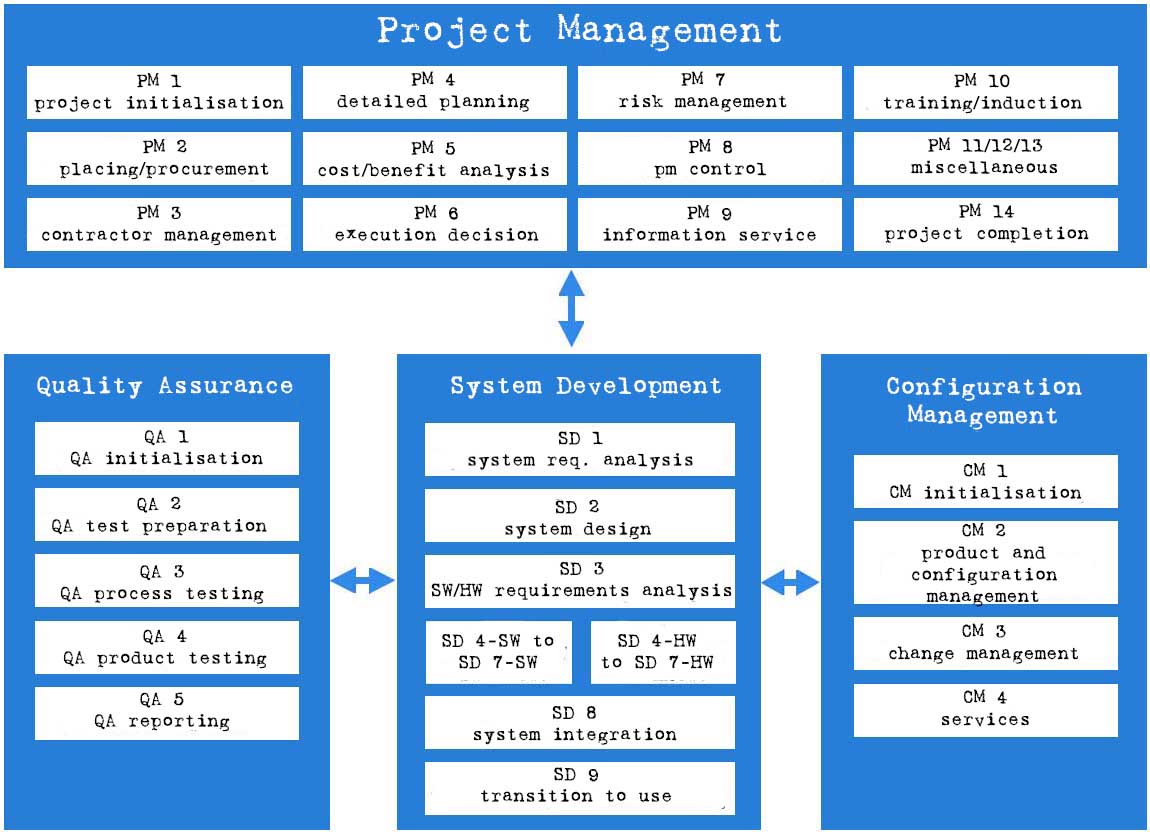What is the V-Modell 97?
Smartpedia: The V-Modell 97 was a development standard for IT systems of the German Armed Forces and the German Federal Administration. It was published 1997.
V-Modell 97 – the development standard for IT systems in 1997
V-Modell 97 was published in 1997 as the successor to V-Modell 92 as the development standard for IT systems of the German armed forces and the German federal administration. The objectives were to standardise software development while at the same time increasing software quality and limiting costs over the lifecycle of software.
In terms of content, V-Modell 97 was divided into three areas:
- The lifecycle process model defined what should be done in a development. This was documented as “General Directive 250 (GD 250)”. GD 250 consisted of a regulations part (GD 250-1), a part for authority-specific supplements (GD 250-2) and a collection of manuals (GD 250-3).
- The allocation of methods determined which methods were to be used to carry out the activities of the process model and and how the results were to be presented. This was documented as “General Directive 251 (GD 251)”.
- The functional tool requirements described how developments should be carried out. This was documented as “General Directive 252 (GD 252)”.
Submodels in V-Modell 97
The content of the V-Modell 97 was based on four submodels:
- Submodel project management (PM) with project initialisation (PM 1), placing/procurement (PM 2), contractor management (PM 3), detailed planning (PM 4), cost/benefit analysis (PM 5), execution decision (PM 6), risk management (PM 7), project management control (PM 8), information service (PM 9), training/induction (PM 10), miscellaneous (PM 11/12/13) and project completion (PM 14).
- Submodel quality assurance (QA) with QA initialisation (QA 1), test preparation (QA 2), process testing (QA 3), product testing (QA 4) and QA reporting (QA 5).
- Submodel system development (SD) with system requirements analysis (SD 1), system design (SD 2), SW/HW requirements analysis (SD 3), SW development (SD 4-SW to SD 7-SW), HW development (SD 4-HW to SD 7-HW), system integration (SD 8) and transition to use (SD 9).
- Submodel configuration management (CM) with CM initialisation (CM 1), product and configuration management (CM 2), change management (CM 3) and CM services (CM 4).
Differences between V-Modell 97 and V-Modell 92
In contrast to V-Modell 92, V-Modell 97 also addressed an incremental and object-oriented development. The submodel Software Creation became the submodel System Development (SD) and requirements became user requirements and technical requirements. In addition, the Project Management (PM) submodel and the terms of the Quality Assurance (QA) submodel were revised.
V-Modell 97 was replaced by V-Modell XT in February 2005. The V-Modell XT does not know submodels but process modules, it defines project execution strategies and decision gates. The tailoring concept has also undergone major changes. In the transition phase from V-Modell 97 to V-Modell XT, many organisations continued to use V-Modell 97 for ongoing projects and only used the new process model for subsequent or new projects.
Notes:
If you like the article or would like to discuss it, please feel free to share it in your network. And if you have any comments, please do not hesitate to send us a message.
Here you can find additional information from our t2informatik Blog:



